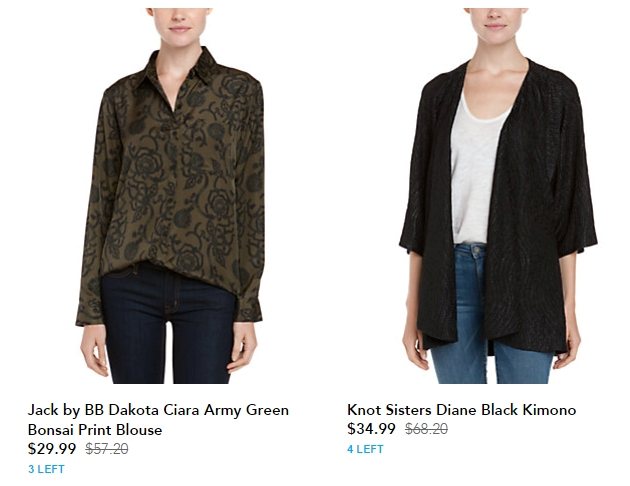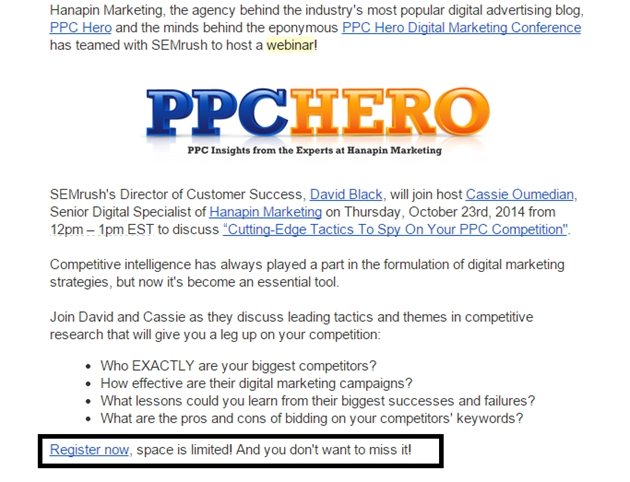To effectively improve conversions for your business, you need to understand consumer psychology.
If you understand your prospects' biases and tendencies, and you know the thoughts and emotions that they experience when they move through your sales funnel or when they're exposed to your marketing materials, you will be able to craft a strategy that accounts for those factors in order to generate more business.
The scarcity bias is one of the most important consumer biases to understand when trying to improve conversions.
The human brain has been conditioned to protect and covet resources that may disappear. Obviously, such behavior benefited our primitive ancestors, who weren't living with the level of abundance we have now. Preserving their limited resources made the difference between life and death.
Fortunately for businesses, this impulse to acquire what is scarce is wired deep into the oldest part of our brain, alongside our other survival instincts. Anything that is scarce or is threatened with being taken away immediately becomes more valuable in your prospects' eyes.
For decades, companies have exploited the bias toward scarcity to increase sales. But that doesn't mean it's not still effective. In fact, it might actually be more effective now than ever before.
Here are four ideas for how to implement the scarcity bias in your favor.
1. Create "open" and "closed" periods for ongoing offers
If your company has a product or service with ongoing enrollment, like an online course where people pay to access the material, chances are once you launch the course you just keep your landing page open to new students. After all, you don't want to turn down any business if someone comes to your site ready to buy.
However, by keeping the course open, you don't introduce the "threat" of scarcity, and you're probably hurting your conversions as a result.
When people come to the site and sees that they can enroll at any time, there's no pressure for them to sign up. After all, the course will always be there tomorrow, so there's no harm in waiting another day.
If you switch to an open-then-closed enrollment cycle, however, your prospects now have a serious choice to make. If they don't sign up now, they have to wait until the next time you open the course. This approach plays on the scarcity bias because you are taking away their potential for accessing the information in the course, and they will feel compelled to protect this access—which means making a purchase.
For the people who first find out about you when the course is closed, simply set up an email form to contact them when the course is open again. This way, you won't lose those prospects.
If you want to drive up demand for your course with them even further, you can offer them a sample of the material as both a teaser for what's to come and also as a way to make having to wait more tolerable.
2. Create limited production runs
Most companies think they will maximize profits by creating as many products as they need to satisfy every possible customer. However, if you go the opposite route and instead create a predetermined, limited number of items, you instantly drive up the demand by having applied the scarcity bias.
If people know that only a fixed number of your products will be available, they will be driven to purchase immediately because, otherwise, they risk not being able to buy at all.

You can increase the price on those scarce products, and doing so will often more than make up for selling fewer items in total.
3. Provide benefits to early adopters
If you're launching a new product or service, it's important to have a strong first wave of customers. However, new products also seem to consumers as a higher risk because there's no track record yet to help establish trust, and that can make them hesitant.
To have a strong wave of early adopters, you can apply the scarcity principle to push people to convert early. One way to do so is to offer lower prices to those who join first—a common and successful tactic for conferences and exhibitions when they offer early-bird discounts.

Instead of discounts, you can also offer bonuses to people who join early. For example, if your business is an online service with multiple package levels, during your launch period you could give anyone who buys your lower-level package access to several months of the highest-level package.
Doing so will provide incentive to sign up early instead of waiting; it also exposes more people to your best offering. Some of those people will most likely want to retain the highest level of functionality after the trial ends and they will upgrade their packages to stay at the top tier, which means even more money for your business.
4. Don't record webinars
When you offer recordings of your webinars, there are no consequences for prospects who don't attend your live recording. They can always just download the file later. The problem is that often people get distracted by other obligations or online content and never get around to viewing your presentation.
Instead, you can try making your webinars live-only events. When you do that, your audience loses something if they choose not to attend: They miss out on whatever information you present, which will trigger their scarcity bias and encourage them to show up.
You can also limit the number of attendees, which creates scarcity and a sense of urgency:

Image from SEMrush
During the webinars, you can further increase conversions and push people to take action via a time limit or product limitation—for example, "This offer will be valid only for the next 10 customers until tomorrow afternoon."
* * *
Now that you see how the scarcity principle can help improve conversion rates, let us know in the comments how you plan to apply it to your business.




